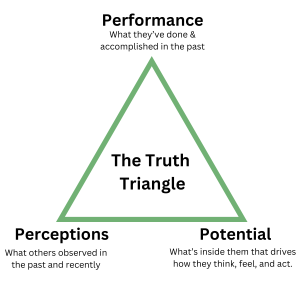360 Feedback Tools
Empower your leaders and build your culture.
We design and deliver customized 360 feedback tools that measure your competencies and values so your leaders can become culture carriers.
Our psychologists are subject matter experts in leadership assessment.
+
We leverage QuestionPro’s platform due to its unmatched functionality and flexibility.
Here’s an overview of our 6 step process:
- Learn about your organizational culture, values, and leadership competencies. (If you don’t have a competency model, we can help you build one.)
- Advise on your 360 feedback communication strategy and alignment with other talent initiatives.
- Apply our expertise in item writing, competency measurement, report design, and user experience to build your customized 360 feedback survey and report.
- Listen to your feedback and use an iterative design process to reflect your culture and brand.
- Administer the process from start to finish with the option to transfer it in-house.
- Debrief reports with your leaders and train your HRBP’s how to do so.
The Value of 360 Feedback Tools
When combined with potential and performance data, 360-degree feedback tools form what we call The Truth Triangle. This concept refers to the idea that gathering data from multiple sources leads to a more accurate picture of the person: how others view them, what they’ve done in the past, and what else they could do.

- Perceptions are best measured with carefully crafted 360 feedback tools that measure your organization’s critical competencies.
- Performance is measured with annual reviews, talent reviews, accomplishments, and objective metrics.
- Potential is best measured with psychometric assessments. It’s the only forward-looking piece, and it’s the most objective.
Options for 360 Feedback Tools
- If you have a leadership competency model, a customized tool is a great option, especially if it will be widely used in the organization.
- If you are considering 360 for C-level succession planning, you may want to invest in an interview-based 360 conducted by a business psychologist.
- If you intend to use the tool on a smaller scale, for entry-to-mid-level leaders, and don’t have your own competencies, an off-the-shelf tool can work well.
A 360 feedback tool your leaders will love.
When done wrong, a 360-feedback process can be a dreaded experience for leaders, a nightmare for administrators, and a waste of time and money due to the lack of clear, actionable next steps. In contrast, when done right, a 360-leadership assessment becomes a powerful tool for gathering valuable data and uncovering rich insights that accelerate growth and strengthen your company culture. By following best practices, your leaders will embrace the process with confidence instead of fearing it.
360 Feedback Best Practices
Below are some quick tips for implementing a 360 leadership assessment.
- Be Proactive & Enthusiastic. These assessments are best used to accelerate growth rather than fixing problem behavior. If used for corrective purposes, people may develop negative associations and fear the process. Instead, build excitement around the tool and consistently communicate the message: “Congratulations! We’re investing in a 360-leadership assessment to support your growth because we value you.”
- Enable comments. Research shows that most people tend to be “nice” raters when completing a 360-leadership assessment. Since ratings are averaged across groups (such as peers or direct reports), the scores typically stay around the midpoint. By allowing or requiring comments, you ensure that leaders receive more meaningful and actionable feedback.
- Review Rater Nomination Lists. The participant should take the lead in choosing their list of raters. However, the manager and/or HRBP should review this list to ensure it includes a diverse range of perspectives.
- Dates & Extensions. We recommend giving raters two weeks to complete the survey, with reminders sent on days 7 and 12. In most cases, a one-week extension will help boost participation rates.”
- Always Debrief. The worst thing you can do with a 360-leadership assessment is simply send the person their report and leave it at that. To keep the momentum going, an HRBP or external consultant should conduct a debrief within a week of delivering the report. Afterward, there should be an alignment meeting with the leader’s manager, followed by monthly or quarterly check-ins to track progress toward development goals.
- Keep it separate from Performance Evaluations. Performance evaluations are unpopular and often poorly executed. Even if your organization handles them well, keeping them separate from the 360-leadership assessment ensures a consistent message that the process is an investment in them and not an evaluation of them.
